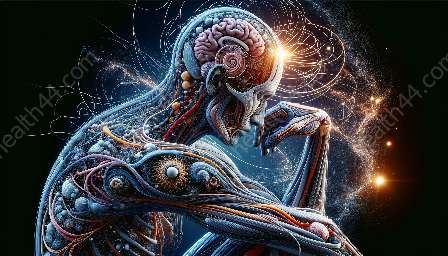Understanding the intricacies of sensory anatomy is crucial in the realms of health education and medical training. The ability to comprehend the complex structure and function of sensory organs, as well as their role in perceiving the world around us, is paramount for healthcare professionals. This topic cluster discusses the anatomy of sensory organs, their connections to the central nervous system, and the perceptual processes involved.
The Senses and Their Anatomy
Sensory anatomy encompasses the study of the various sensory organs, including the eyes, ears, nose, tongue, and skin, which enable us to perceive the environment. Each sensory organ has a unique structure and function, allowing it to detect specific stimuli. For instance, the eye contains photoreceptors that convert light into neural signals, while the nose contains olfactory receptors that are sensitive to different odors.
Furthermore, the anatomy of sensory organs also involves understanding the specialized cells and tissues within these structures. For example, the tongue is equipped with taste buds that detect different flavors, and the skin contains sensory receptors sensitive to touch, temperature, and pain.
Connections to the Central Nervous System
Once sensory stimuli are detected by the respective organs, they are transmitted to the central nervous system for processing and interpretation. The pathways through which sensory signals travel, such as the optic nerve for vision and the auditory nerve for hearing, are integral parts of sensory anatomy. Understanding these pathways is essential for diagnosing and treating sensory disorders that may arise from disruptions in these neural connections.
Moreover, the role of the brain in interpreting and integrating sensory information cannot be understated. The sensory cortex and various other brain regions play a critical role in the perception of sensory stimuli, allowing individuals to make sense of their surroundings and respond accordingly. This integration of sensory signals is vital for maintaining homeostasis and ensuring survival.
Perception and Sensory Integration
An intriguing aspect of sensory anatomy is the process of perception, wherein sensory stimuli are interpreted and translated into meaningful experiences. This process involves complex neural circuits and interactions between different sensory modalities. For instance, the perception of a ripe fruit not only involves the visual appearance but also the associated smell and taste, highlighting the intricate integration of multiple sensory inputs.
Furthermore, sensory anatomy is closely intertwined with the psychological and cognitive aspects of perception. Individuals' experiences and perceptions of the world are shaped by their sensory anatomy, and variations in sensory processing can influence how people interact with their environment. Medical professionals must consider these factors when addressing sensory-related issues in patients.
Significance in Health Education and Medical Training
Comprehending sensory anatomy holds immense significance in health education and medical training. By gaining a deep understanding of sensory organs and their connections to the central nervous system, healthcare professionals can better diagnose and manage sensory-related conditions. Additionally, knowledge of sensory anatomy enhances the development of innovative medical technologies and interventions aimed at improving sensory function in patients.
Moreover, awareness of sensory anatomy is crucial for patient education and counseling. It allows healthcare providers to effectively communicate with patients regarding sensory impairments and assist them in coping with any challenges posed by such conditions. Furthermore, in the context of medical training, an in-depth understanding of sensory anatomy equips aspiring healthcare professionals with the necessary knowledge and skills to address a wide array of sensory disorders and conditions.
Conclusion
Exploring the captivating realm of sensory anatomy unveils the awe-inspiring complexities of the human sensory system. From the specialized structures of sensory organs to the intricate neural pathways and the multifaceted processes of perception, the study of sensory anatomy enriches our understanding of human physiology and enriches medical education and training with insights critical for providing optimal patient care.


